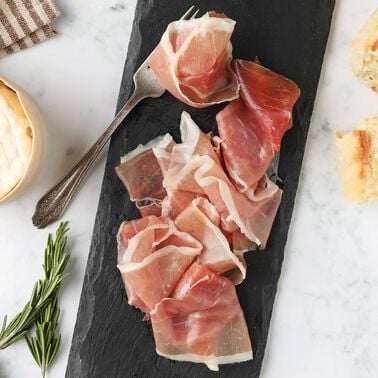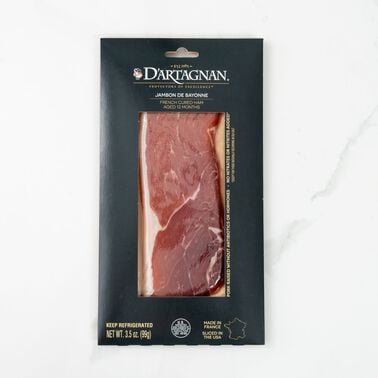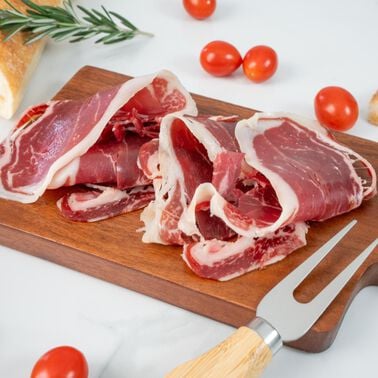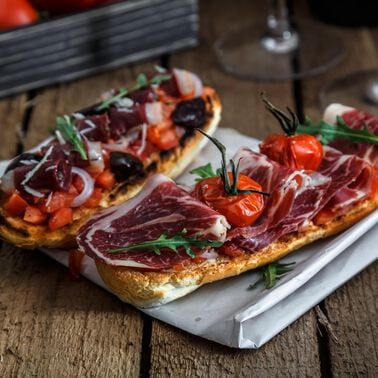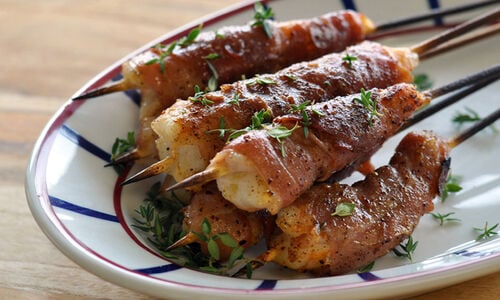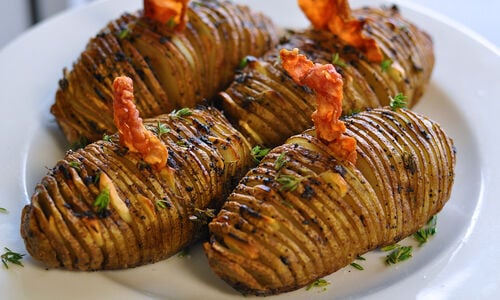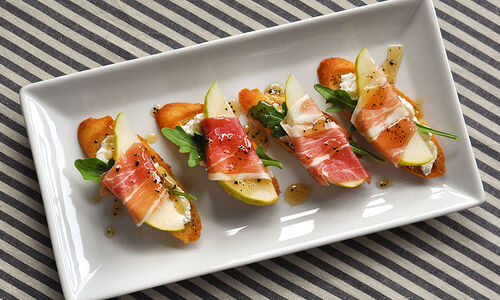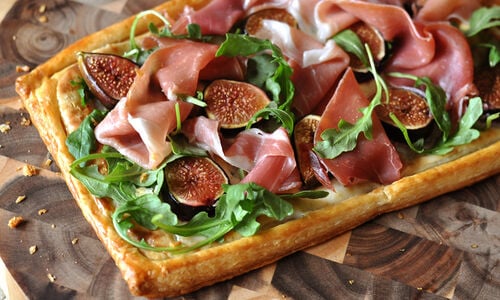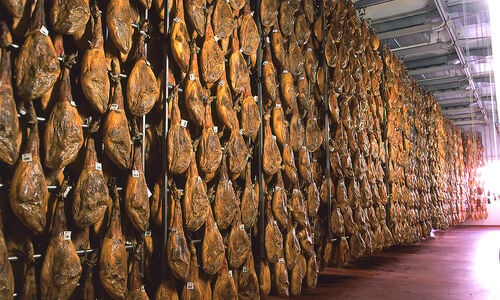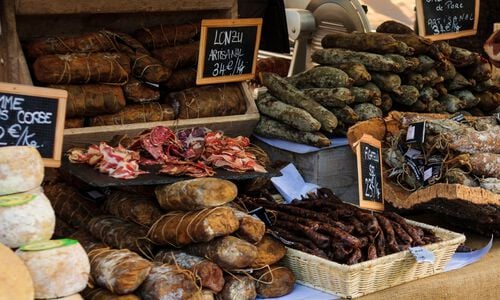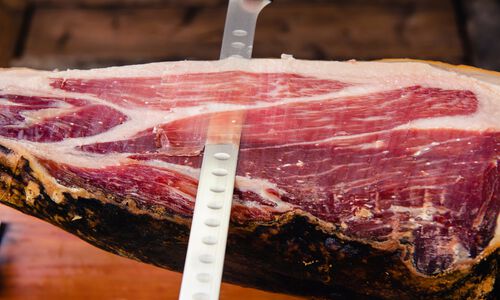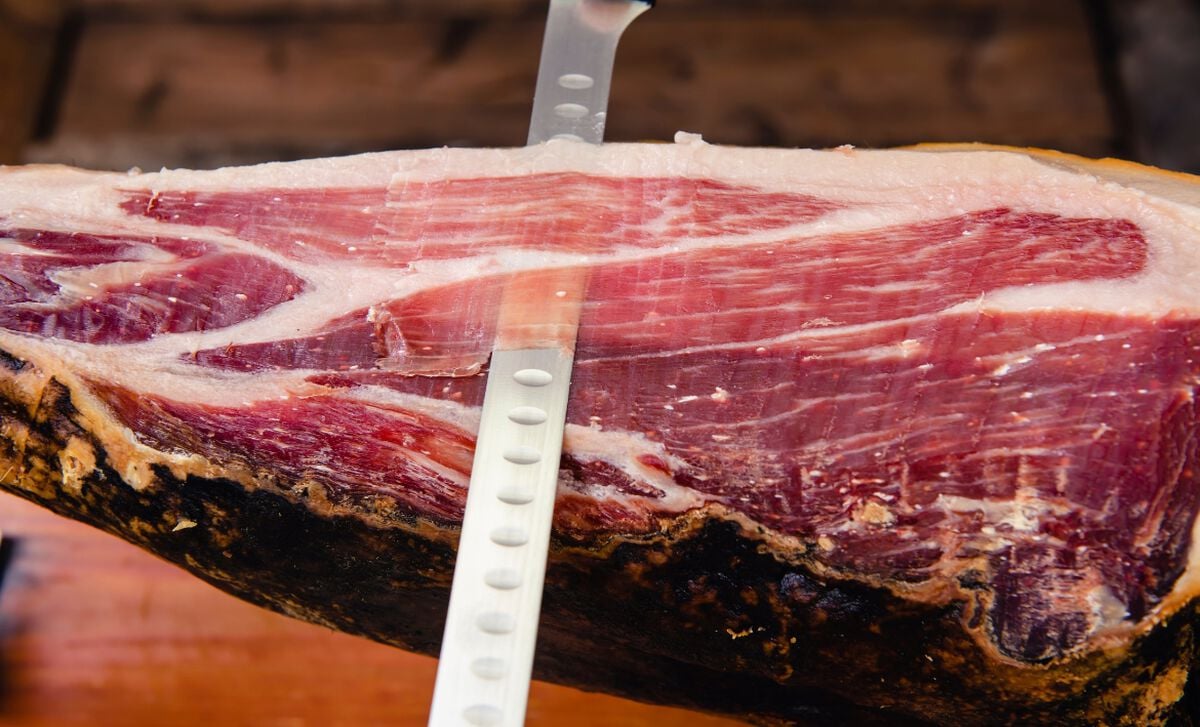
- Fresh hams are cut from the pig, cleaned and hair removed. They can be cooked just like any fresh cut of pork.
- Wet-cured hams are injected with a curing solution (usually with water, sugar, honey, and preservatives), or are rubbed or tumbled in the curing solution. Wet-cured hams are often uncooked, partially cooked and smoked, or fully cooked and ready to eat. The wet-cured ham is the classic American ham, glazed and roasted for a holiday meal.
- Dry-cured or country hams are like Italian prosciutto, salted and air-dried for long periods of time, often over a year. Spain is famous for its dry-cured ham, called jambon, which can age for up to 3 years, intensifying in flavor the entire time.
Mangalica Ham
One of the most extraordinary hams, the Mangalica, is born of a recent partnership with Hungarian farmers and heritage breed preservationists. Their indigenous Mangalica pig is an Old World breed with a thick coat of curly hair and lots of subcutaneous and intramuscular fat. This protects the pork as it hangs in the curing rooms of Spain for up to three years, developing a rich flavor and maintaining its tenderness. We offer Mangalica ham whole, with a traditional carving stand for dramatic presentation, and sliced for convenience and the ultimate charcuterie board.
The Mangalitsa (spelled Mangalica in Spain) was once the most popular pig in Hungary, used for traditional sausages and creamy lard, but by the 1990s was nearly extinct. A group of farmers determined to preserve this precious curly-haired, heritage breed, and today the Mangalica is enjoying a revival on small farms, both in Europe and the United States. The Mangalica pig is not well-suited to intensive farming as it is unable to thrive in tight confines. In Hungary, Mangalica pigs are often raised on pasture in the Hungarian Steppe, an expansive grassland ecosystem, where they forage and root for their food.
Jamon Serrano
Jamon Serrano, or Serrano ham, meaning literally “mountain ham,” is aged in the fresh mountain air of Spain for a minimum of 18 months with only natural Mediterranean sea salt acting as a preservative. Most Serrano ham is made from Landrace breed pigs, or a mix of Duroc breed, Large White, and Landrace. In Spain, Serrano ham is a part of life, served in bars, and restaurants and found in virtually every home.
Air-cured jamon is a Spanish culinary icon and a true pleasure for the taste buds. Now you can easily enjoy the famous dry-cured Serrano ham with our convenient pre-sliced option. You’ll find endless ways to use this generous family pack, from charcuterie and cheese plates to wrapped meats, fish, fruits, and vegetables.
Iberico Ham
Serrano should not be confused with Iberico ham, which is much more expensive, and made from the Black Iberian breed, which is related to wild boar. The pigs are raised in pasture and oak groves in the southern regions of Spain, eating grass, herbs, roots, acorns, and cereals. Due to the acorn diet, the fat of the Iberico ham is a monounsaturated fatty acid, associated with balancing cholesterol. These hams were known as a delicacy even in the days of the Roman Empire, and they are still handcrafted by traditional methods. Master ham makers use traditional air curing methods to create these famous Iberico hams, curing them for more than two years. Iberico ham has golden and highly aromatic marbling, a nuanced flavor, and is so tender it liquefies at room temperature.
Jambon de Bayonne
Jambon de Bayonne is an air-cured, salted ham and a gastronomic jewel that takes its name from the ancient port city of Bayonne in the far southwest of France, in the cultural region of Gascony and the Basque country. Jambon de Bayonne enjoys protected status (PGI), which means there are regulations that control every aspect of production to guarantee quality. The pork must come from one of eight defined PGI-certified breeds of pigs raised in a specific area, and be fed a strictly controlled diet. Even transport, slaughter, size and weight, minimum fat content, and post-slaughter storage temperature are all regulated.
The hams are naturally cured for a minimum of 12 months, where the warm wind of the Pyrenees Mountains meets the humid air from the ocean, and only the mineral-rich salt of Salies-de-Bearn may be used. All of this must be done to develop the unique flavor and earn the coveted label “Jambon de Bayonne."
